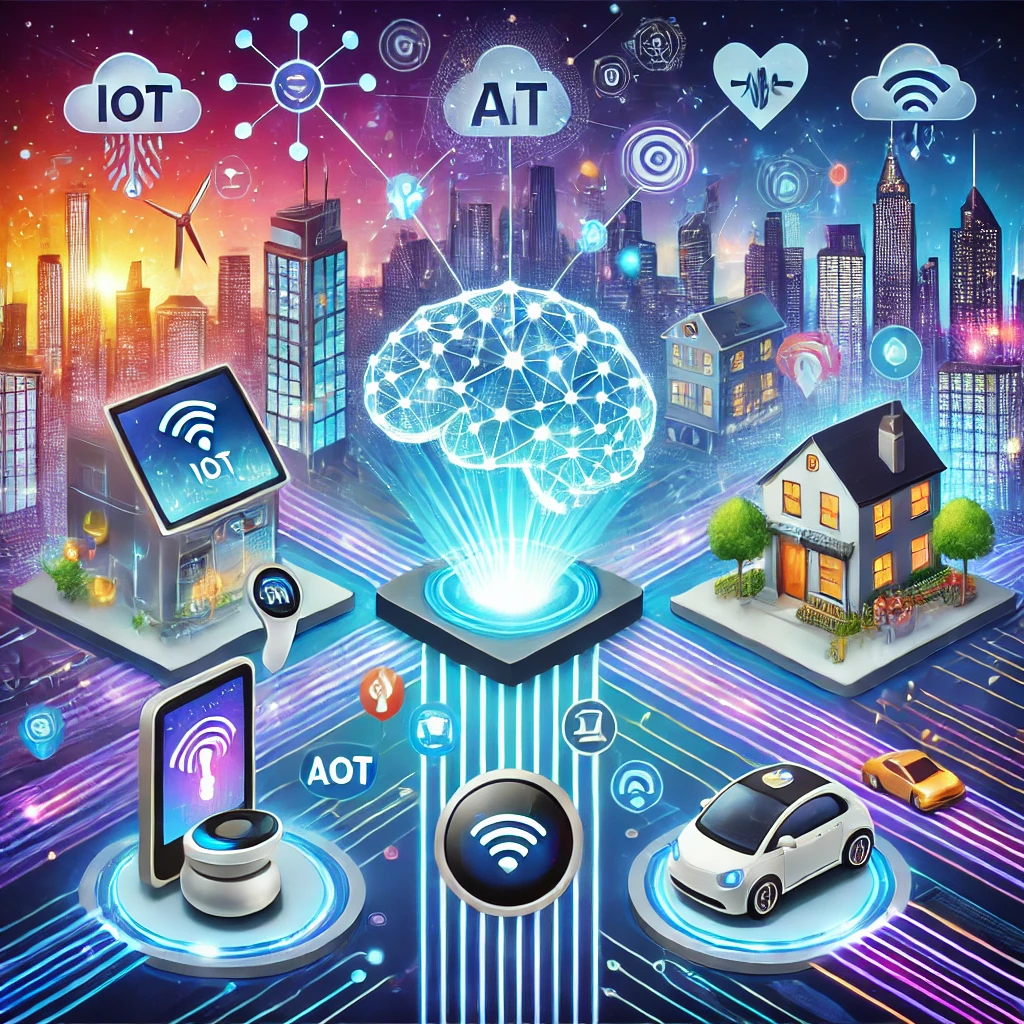
Introduction
In a world of rapidly evolving technology, the intersection of AI and IoT is transforming how devices interact, make decisions, and improve our daily lives. Combining the Internet of Things (IoT) and Artificial Intelligence (AI) has unlocked new possibilities, enabling devices to think, learn, and communicate in ways previously unimaginable. This article explores how this convergence is shaping a smarter, interconnected world.
What Is IoT?
Defining the Internet of Things
The Internet of Things, commonly known as IoT, refers to a network of physical devices connected to the internet. These devices collect and exchange data to perform tasks efficiently. Examples include smart thermostats, wearable fitness trackers, and automated home systems.
How IoT Works
IoT devices rely on sensors to gather data, connectivity to transmit it, and a central platform for data analysis. Without advanced computing capabilities, however, IoT devices are limited to basic automation.
What Is AI?
Understanding Artificial Intelligence
Artificial Intelligence refers to machines designed to mimic human intelligence. AI encompasses a range of technologies, including machine learning, natural language processing, and computer vision.
AI’s Role in Automation
AI algorithms can analyze complex datasets, predict outcomes, and make real-time decisions. Its ability to learn and adapt sets it apart from traditional computing.
How AI Enhances IoT
Smarter Data Analysis
The intersection of AI and IoT allows for more sophisticated data analysis. AI processes the vast amounts of data generated by IoT devices, uncovering patterns and insights that improve decision-making. For instance, AI-powered smart homes can predict user behavior to optimize energy consumption.
Real-Time Decision-Making
By integrating AI, IoT devices can make decisions instantly. For example, AI in autonomous vehicles analyzes sensor data to make split-second decisions, enhancing safety and efficiency.
Predictive Maintenance
One practical application of AI in IoT is predictive maintenance. IoT devices equipped with AI can detect potential equipment failures before they happen, reducing downtime and maintenance costs.
Applications of AI and IoT in Various Industries
Healthcare
In healthcare, the intersection of AI and IoT has enabled revolutionary advancements. Wearable devices monitor patients’ vitals and send real-time data to doctors, while AI analyzes this data for early diagnosis of health conditions.
Manufacturing
AI and IoT have transformed manufacturing with smart factories. Connected machines equipped with AI algorithms optimize production lines, reduce waste, and enhance product quality.
Transportation
The transportation sector benefits greatly from this convergence. Autonomous vehicles, smart traffic systems, and logistics management have all improved through the use of AI and IoT technologies.
Retail
Retailers leverage the intersection of AI and IoT to enhance customer experiences. Smart shelves monitor inventory levels, while AI algorithms predict demand, reducing stock shortages.
Challenges at the Intersection of AI and IoT
Data Privacy Concerns
With smarter devices come greater concerns about data privacy. IoT devices collect sensitive information, and AI processes this data. Ensuring secure data handling is crucial to building consumer trust.
Integration Complexities
Seamlessly combining AI and IoT technologies is no small feat. Compatibility issues between devices and platforms often hinder the adoption of these advanced systems.
High Implementation Costs
Developing and deploying AI-powered IoT solutions require significant investments. Many businesses struggle to justify the initial expenses despite the long-term benefits.
The Future of AI and IoT Integration
Smarter Cities
The intersection of AI and IoT is paving the way for smarter cities. From traffic management to waste collection, connected devices powered by AI can revolutionize urban planning and sustainability.
Enhanced Personalization
As AI continues to evolve, IoT devices will become more personalized. Devices will not only respond to user commands but also anticipate needs based on individual habits.
Edge Computing Advancements
Edge computing, where data is processed closer to the source, will enhance AI and IoT integration. This technology minimizes latency and ensures faster decision-making.
How Businesses Can Leverage AI and IoT
Developing Customer-Centric Solutions
Businesses can use the intersection of AI and IoT to create solutions that prioritize customer needs. Smart devices capable of learning from user interactions foster loyalty and improve satisfaction.
Streamlining Operations
AI-driven IoT devices can automate repetitive tasks and optimize workflows. This improves efficiency and allows businesses to focus on strategic initiatives.
Exploring New Revenue Streams
By collecting and analyzing data, companies can identify new market opportunities. AI can help predict customer trends, allowing businesses to stay ahead of competitors.
Key Considerations for Adopting AI and IoT
Security Measures
Before adopting these technologies, companies must ensure robust cybersecurity protocols. Encryption, regular updates, and secure authentication mechanisms are vital.
Scalability
IoT networks grow over time, and AI systems must be scalable to handle increasing amounts of data. Planning for scalability ensures sustainable growth.
Training and Expertise
To successfully implement AI-powered IoT solutions, organizations must invest in employee training. Hiring experts in both AI and IoT is equally important.
The Role of Governments and Policymakers
Governments play a significant role in shaping the future of the intersection of AI and IoT. Policies promoting data protection, standardization, and innovation are crucial. Collaborative efforts between governments and industries can accelerate the adoption of these technologies while addressing ethical concerns.
Conclusion
The intersection of AI and IoT represents a transformative leap in technology, creating smarter devices capable of making better decisions. From healthcare to manufacturing, this integration is reshaping industries and improving lives. While challenges such as data privacy and high costs exist, the potential benefits far outweigh the drawbacks. As these technologies continue to evolve, the world can look forward to a future driven by intelligent, interconnected systems.
READ MORE :
- https://rmm.abyadi.com/iot-in-education/
- https://rmm.abyadi.com/the-economic-impact-of-iot/
- https://rmm.abyadi.com/the-roleof-iot-in-healthcare/